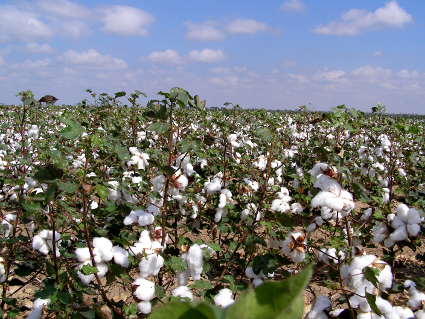As the Northern Hemisphere begins harvesting its cotton crops, economists and speculators around the world are evaluating data as it comes in daily. In this blog, we attempt to summarize the realities of what experts from around the globe feel are the short term and long term impacts for global stocks, new crop data, and demand for cotton compared to other fibers.
Cotton Prices Overview
Today, the December 2015 price based on the NY Futures is $.6097/lb, while the A Index price is $.6648/lb. The difference in the two prices can best be explained as the NY Futures price is representative of the current spot price for US grown cotton and the A Index is representative of the world price for cotton.
It is also interesting to see the average calendar year NY Futures price for cotton since 2011. They are as follows:
- 2011 – $1.153/lb.
- 2012 – $.7952/lb.
- 2013 – $.8327/lb.
- 2014 – $.7188/lb.
- 2015 – $.6458/lb.
It is important to note that during any given crop or calendar year, the price fluctuates like other commodities, and each customer has to use their best judgement as to when to buy their cotton. Also, the prices do not reflect freight costs or warehouse carrying costs.
Supply/Consumption & Export
U.S. Outlook
- US production is forecasted to be 13.4 M bales. This is down considerably from 16.3 M bales produced in 2014.
- US mill consumption is forecasted to be 3.7 M bales, which is comparable to the past 3 years.
- US cotton export projections have increased slightly to 10.2 M bales.
Global Outlook
- Global cotton production for 2015 is expected to be 108.7 M bales, down from almost 119 M bales in 2014.
- Global Cotton Consumption projections have been reduced to 113.4 M bales for 2015.
China Outlook
- China continues to be the largest consumer of cotton with a consistent level of 34 M bales consumed each of the past several years. China, India and Pakistan will consume 62% of the cotton in 2015. Additionally, China continues to work down the large stockpile of inventory accumulated in years 2011 – 2013.
Variables Affecting Near-Term Cotton Prices
The global economy and China’s declining economic growth that is affecting global economic growth are variables to watch. The strengthening of the U.S. dollar is another factor. Weather is always an unknown variable as to the pounds per acre.
Finally, Dr. O. A. Cleveland believes that as the US cotton industry continues to expand its role as the leading producer and exporter of high quality cotton, cotton plantings will continue to approximate 10.5 M acres and 15 M bales of cotton harvested in the US over a long-term period. He also believes that cotton prices need to trade near the $.70/lb. range to maintain that acreage planted and the production level of 15 M pounds.

